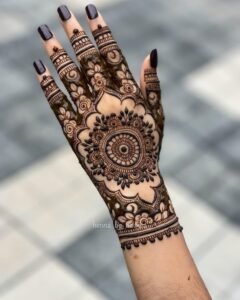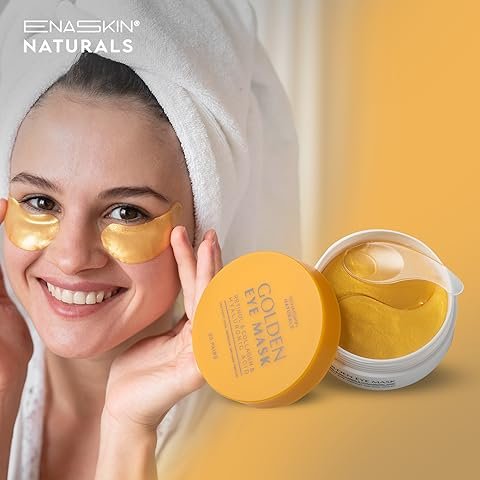Mehndi, also known as henna, is more than just a beautiful body art form; it’s a rich tradition deeply embedded in cultures, especially in South Asia and the Middle East. Used for centuries, mehndi designs are not just aesthetically pleasing but are also symbolic, representing blessings, luck, and joy. This blog takes you through the captivating world of mehndi designs, their history, significance, and the various styles you can explore.
The History and Cultural Significance of Mehndi

The history of mehndi traces back over 5,000 years. Originating in ancient Egypt, where it was used to adorn the hands and feet of pharaohs, the art of applying henna spread across the Middle East and into India. In India, mehndi became particularly important, integrated into wedding rituals, festivals, and other celebrations.
In Hindu and Muslim cultures, mehndi is considered a sign of joy, auspiciousness, and prosperity. Applying mehndi is not just a cosmetic practice but a form of blessing, believed to bring good luck and ward off evil spirits. Traditionally, mehndi is applied before weddings, festivals like Diwali and Eid, and other special events. The art of applying henna on brides has evolved, with intricate patterns that extend from the hands to the forearms and even the feet.
Read more: mehndi design
Symbolism and Traditional Patterns in Mehndi
Mehndi designs aren’t random; they are filled with symbolic meaning. Here are some popular symbols and patterns commonly used:
Paisley: This iconic teardrop shape represents fertility and luck.
Flowers: Floral patterns often symbolize joy and beauty, making them popular for bridal mehndi.
Vines and Leaves: Vines and leaves represent growth and longevity, symbolizing a blossoming relationship.
Peacock: This majestic bird symbolizes beauty and elegance, often used in bridal mehndi.
Mandala: The circular patterns represent completeness, harmony, and unity.
Arabic Calligraphy: Sometimes, Islamic verses or phrases are included, symbolizing devotion and blessings.
Types of Mehndi Designs
The beauty of mehndi lies in its versatility, with styles differing based on cultural influences, regions, and trends. Here are some popular types of mehndi designs:
1. Indian Mehndi Design
Indian mehndi is intricate and detailed, known for its heavy patterns that cover most of the hand and arms. Common elements in Indian mehndi include paisleys, floral patterns, and peacocks. For brides, Indian mehndi designs may include the names of the bride and groom subtly integrated into the design, adding a playful element to the pattern.
2. Arabic Mehndi Design
Arabic mehndi designs are known for their bold lines and less dense patterns. This style features flowers, vines, and leaves, often applied to the side of the hands and arms. Arabic designs are easy to apply and look stylish, making them a popular choice for both casual events and special occasions. Unlike Indian mehndi, Arabic designs leave spaces between the motifs, making them look more modern and minimalistic.
3. Pakistani Mehndi Design
Pakistani mehndi combines elements from both Indian and Arabic styles. These designs are intricate and detailed, with complex patterns that cover the hands and arms. Pakistani mehndi designs often feature geometric shapes, flowers, and domes, adding a touch of elegance. Due to their intricate nature, these designs are popular for weddings and festive occasions.
4. Moroccan Mehndi Design
Moroccan mehndi designs are distinctive, with patterns that are more geometric and symmetrical. These designs often include squares, diamonds, and other shapes, influenced by traditional Moroccan art. The designs are not as floral as Indian or Arabic mehndi, giving them a bold and edgy look. Perfect for those who want to try something unique, Moroccan mehndi suits people who appreciate clean lines and minimalistic art.
5. Western Fusion Mehndi Design
With the popularity of mehndi in Western cultures, a fusion style has emerged. This style mixes traditional elements with modern patterns like hearts, geometric shapes, and even animal motifs. Western fusion mehndi is perfect for those who want a touch of henna without the traditional heaviness, as it usually features smaller, dainty designs suitable for casual occasions or music festivals.
How to Apply Mehndi: Tips and Techniques for Beginners
Applying mehndi can seem overwhelming if you’re a beginner, but with the right technique and practice, you can create beautiful designs. Here are some essential tips:
1. Start with Simple Designs: Begin with basic patterns like flowers, leaves, and lines. As you get more comfortable, you can try intricate designs.
2. Use a Cone or Stick: Traditionally, mehndi is applied using a small stick, but cones are more common and easier for beginners. Cones allow for precise application and control.
3. Practice on Paper: Before applying mehndi on the skin, practice your design on paper. This will help you get the pattern and proportions right.
4. Keep the Mehndi Wet for a Richer Color: Once applied, allow the mehndi to dry naturally. Spraying lemon juice mixed with sugar can help the color darken.
5. Be Patient: Mehndi takes a few hours to dry, so avoid washing your hands or disturbing the design during this time.
Tips to Make Your Mehndi Last Longer
To get the most out of your mehndi design, follow these simple steps:
Avoid Washing Immediately: Avoid washing the area for at least 12 hours after removing the dried mehndi to allow the color to deepen.
Apply Heat: Heat helps the color to darken. You can warm your hands over a stove briefly or use a hairdryer on low heat.
Moisturize with Natural Oils: Coconut oil, mustard oil, or olive oil can help preserve the mehndi. Avoid lotions or creams that might contain chemicals that reduce the color intensity.
Mehndi in Modern Fashion
In recent years, mehndi has become more than a traditional art form. It’s embraced as a fashion statement, often seen at music festivals, fashion shows, and even in Hollywood. Mehndi-inspired tattoos are also gaining popularity, offering people a way to experience henna designs on a more permanent basis.
Bridal mehndi has also evolved, with many modern brides opting for minimalistic designs that suit their aesthetic. New techniques like white henna, glitter mehndi, and colored mehndi allow for a fun twist on the traditional art form. Celebrities like Beyoncé, Rihanna, and Demi Lovato have showcased mehndi, helping to popularize it globally and inspire new trends.
Conclusion
Mehndi designs hold a special place in many cultures, symbolizing joy, prosperity, and beauty. From its roots in ancient history to modern fashion runways, mehndi continues to capture the hearts of people worldwide. Whether you’re drawn to the delicate patterns of Indian mehndi or the bold lines of Moroccan designs, there’s a style for everyone to enjoy. With a few basic techniques and a little practice, you can create your own beautiful mehndi designs, embracing a timeless tradition that celebrates art, culture, and beauty.


Comments 1